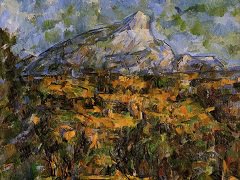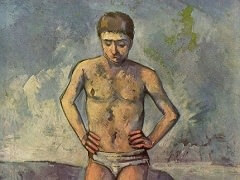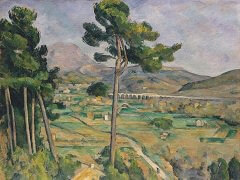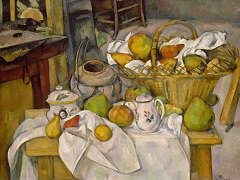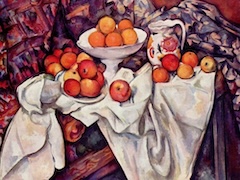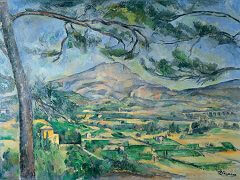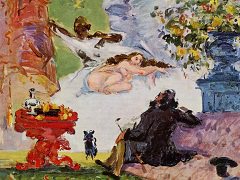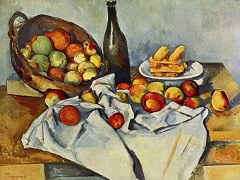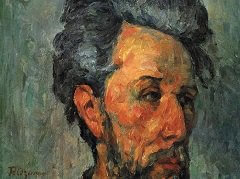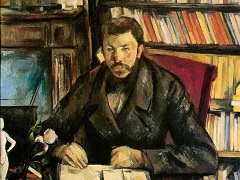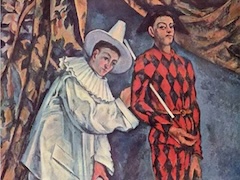The Card Players, 1890-92 by Paul Cezanne
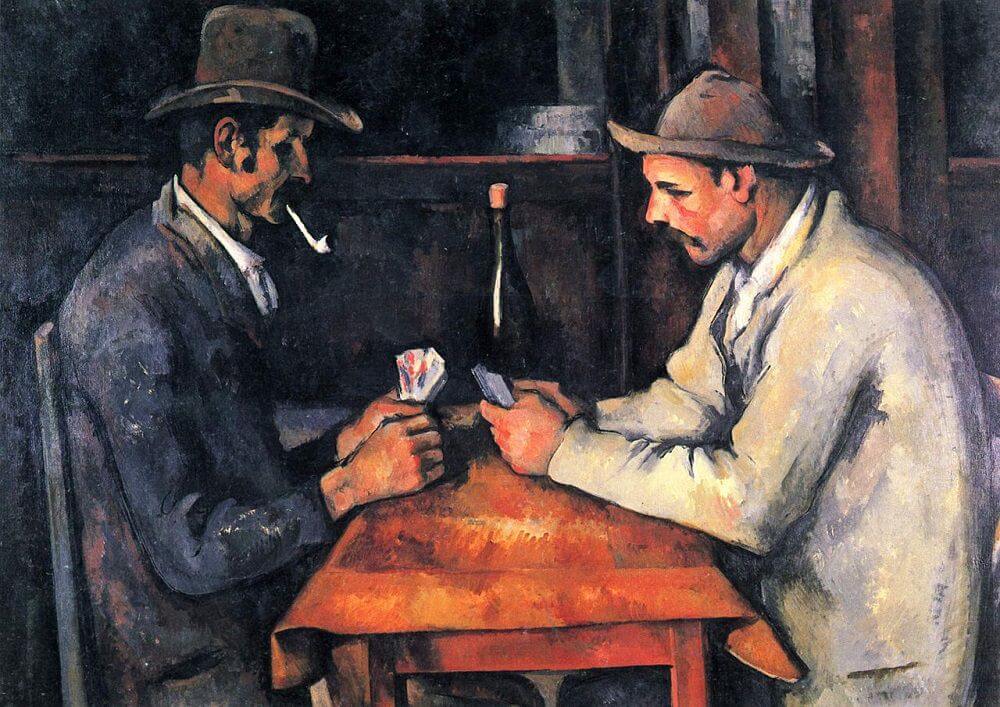
Of the three versions of The Card Players Cezanne created, this little painting is the last and undoubtedly the best; it is the most monumental and also the most refined. The single shapes are simpler, but the relationships are more varied. The extraordinary conception of the left player is the result of a progressive stabilizing and detachment of this meditating figure.
Starting with an early Caravaggio, card players meant cheaters and gulls, and they quickly became moral lessons and tavern scenes. Cézanne studied them all, while eliminating the indulgence, the excess, the moralizing, and the commotion. Cezanne's The Card Players is the image of a pure contemplativeness without pathos. Given the symmetry of the two card players looking fixedly at their cards, Cezanne had to surmount the rigidity and obviousness of the pair and yet preserve the gravity of their absorbed attitudes. It is remarkable how thoroughly interesting is this perfectly legible picture, how rich in effective inventions of color and form.
The problem: how to image the figures as naturally symmetrical, with identical roles - each is the other's partner in an agreed opposition - but to express also the life of their separateness, without descending to episode and weakening the pure contemplative quality, so rare in older paintings of the game.

It is accomplished in part by a shift of axis: the left figure is more completely in the picture; his partner, bulkier, more muscular, is marginal - but oddly also nearer to us - and takes up more of the table. His head is bent forward; he is more intensely concerned. The first man is the more habitual player, relaxed and cool, and his long columnar form is contrasted with the horizontal line behind him. The two hats, one with arched brim, firm and poised, the other with turned-up, irregular brim, soft and battered, convey this difference of feeling - two tonalities of meditation. The left player has a bright mind and a sluggish body, the right has a slower mind and a livelier body or temper. The former's arm begins very low, his limbs are detached from the tiny head which is intent but not anxious (it is remote from the body and is like the hat on the head). The other has a hunched effect; if he is ready to play, he is more strained in deciding. The arms of the first are parallel, the other's arms converge. The first head is set against a vague landscape, the second against an architecture of verticals, a more rigid, pressing form which measures the inclination of his body. The long man's face is shaded and lit with inner contrasts that subdue the silhouette; the other's is more open, more fully given. The first has light cards, the second, dark, and his hands are nearer to us. The tablecloth ends in a stable right angle at the left, in a sharply pointed form at the right. The color too is a subtly contrasted expression: violet against yellow, but both neutralized; in the left figure, violet jacket, yellow pants; the converse in the right. The latter is therefore more strongly contrasted with his surroundings in color as well as form. But this contrast is crossed: the straight figure against a sloping chair, the inclined figure against a vertical edge.
The inherent rigidity of the theme is overcome also by the remarkable life of the surface. There is a beautiful flicker and play of small contrasts, an ever-responding sensibility on every inch of canvas. Today, The Card Players is considered as the most iconic post-impressionist painting, along with the famous Van Gogh Night Stars painting.


